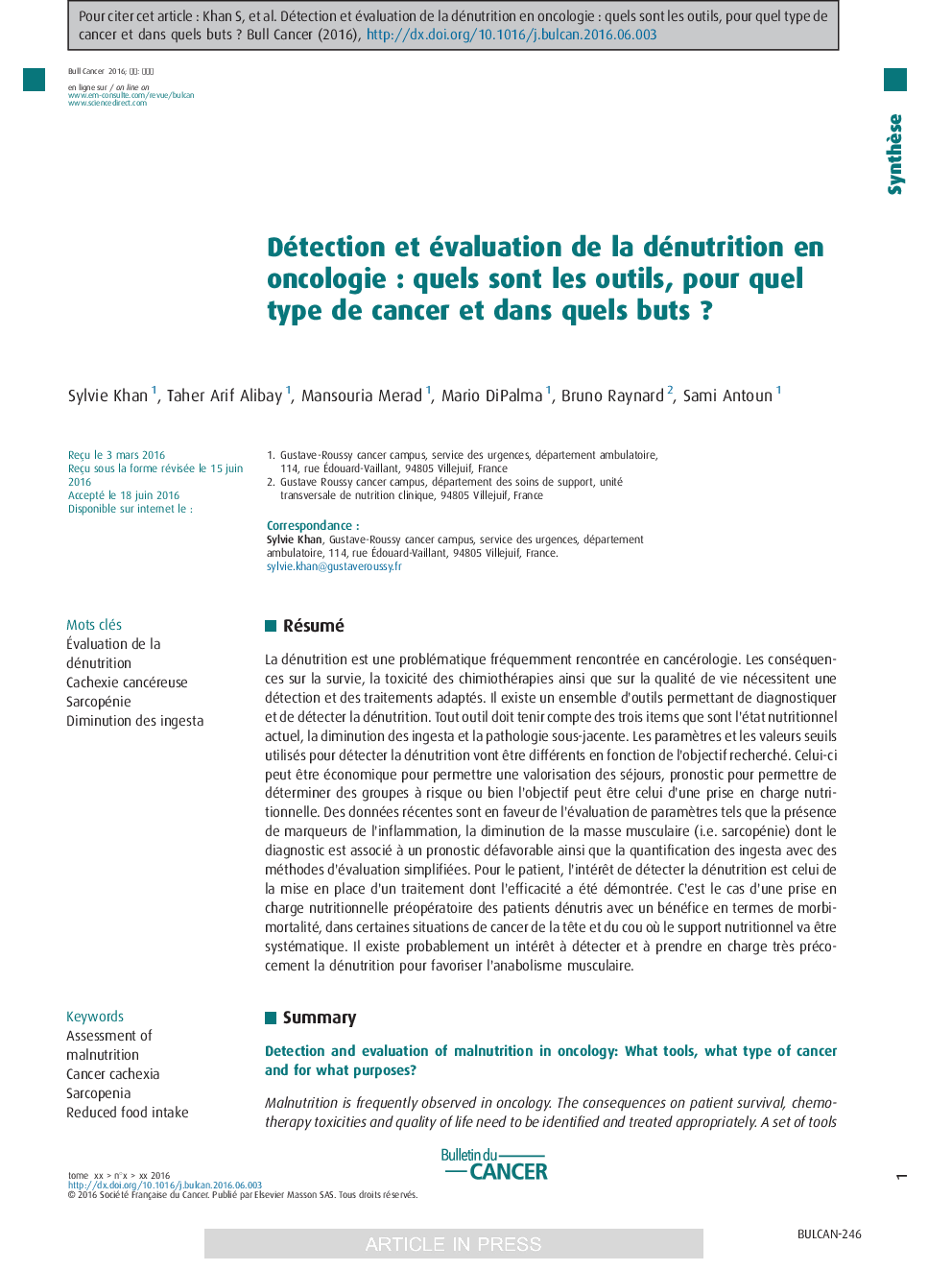| Article ID | Journal | Published Year | Pages | File Type |
|---|---|---|---|---|
| 5697482 | Bulletin du Cancer | 2016 | 10 Pages |
Abstract
Malnutrition is frequently observed in oncology. The consequences on patient survival, chemotherapy toxicities and quality of life need to be identified and treated appropriately. A set of tools are available that enable clinicians to diagnose and detect malnutrition. Each tool must consider three items: the patient's current nutritional status, reduced food intake and the characteristics of the underlying disease. The parameters and thresholds used to detect malnutrition differ according to the objective pursued. It can be economic, increasing the reimbursement of hospital stays, it can help define prognostic risk groups or its purpose can be to initiate nutritional treatment. Recent data support the assessment of parameters such as inflammatory markers, decreased muscle mass (i.e. sarcopenia) whose diagnosis is associated with a worse outcome and the quantification of food intake with simplified methods. The benefit for the patient of detecting malnutrition will be the initiation of a nutritional treatment when its efficacy has been demonstrated. A case in point is the nutritional support provided to malnourished patients before surgery with benefits in terms of mortality and morbidity and in certain head and neck cancer situations where nutritional support is systematically implemented. It is probably relevant to detect and initiate treatment early in order to promote muscle anabolism.
Keywords
Related Topics
Health Sciences
Medicine and Dentistry
Oncology
Authors
Sylvie Khan, Taher Arif Alibay, Mansouria Merad, Mario DiPalma, Bruno Raynard, Sami Antoun,
